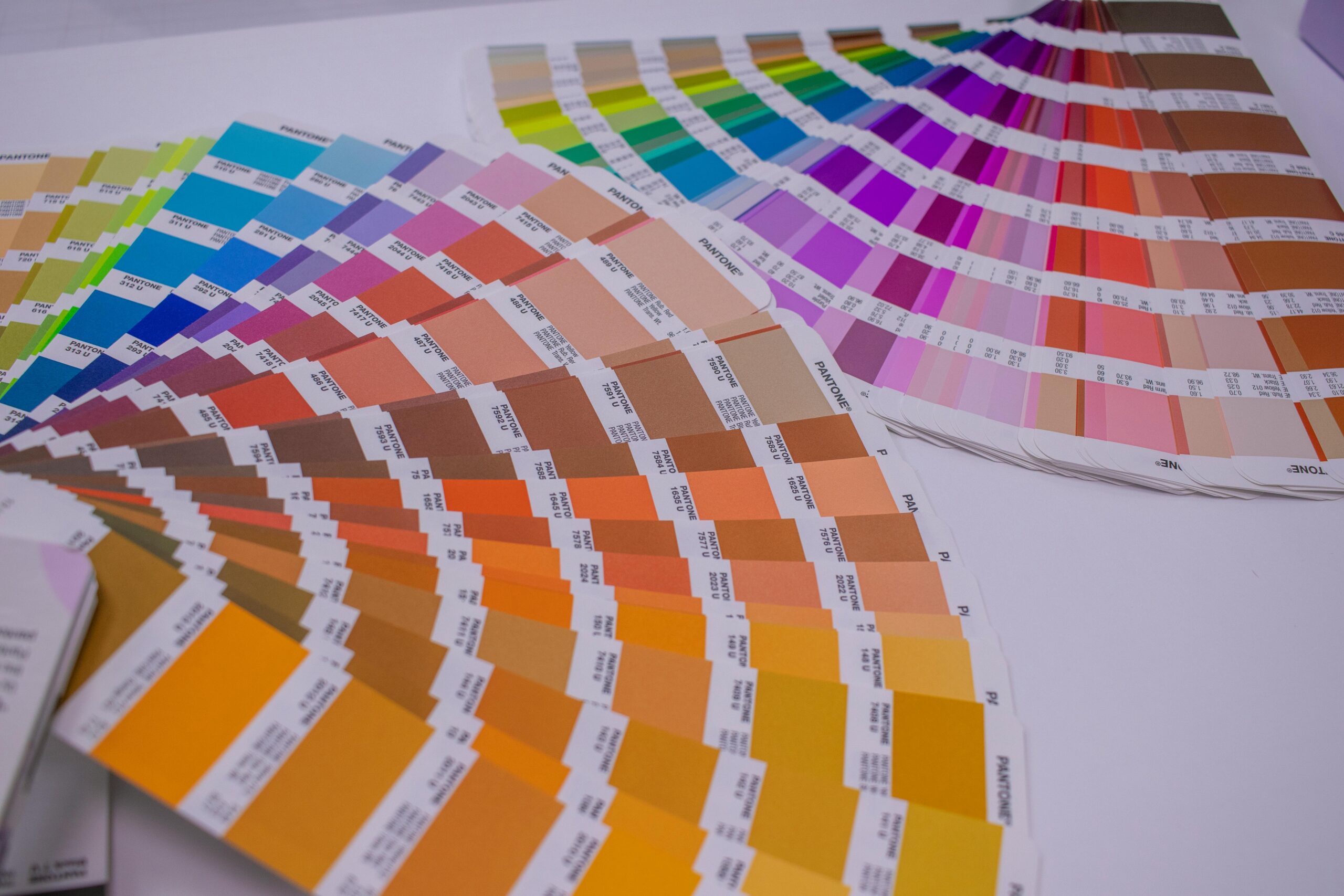
Do you ever wonder why, even after choosing your favorite color and surrounding yourself with beloved items, your space still feels off? We’ve heard many homeowners express frustration with selecting the right color palettes. One key to creating a harmonious space is understanding the psychology of color. The colors you choose can significantly influence the mood and atmosphere of each room, impacting your emotions and overall well-being. This is where color psychology comes into play, providing insight into how different hues affect our mood.
Understanding Color Psychology
Color psychology is the study of how colors affect human behavior and emotions. While individual reactions to colors can vary based on personal experiences and cultural influences, certain colors tend to evoke similar responses in most people.
Here’s a quick overview of common associations with various colors:
Red: Excitement, energy, passion. Red is a stimulating color that can increase energy levels and heart rate. It’s great for spaces where you want to encourage activity and conversation, such as dining rooms or living rooms.
Blue: Calm, relaxation, serenity. Blue has a calming effect and is often used in bedrooms and bathrooms to create a peaceful environment. Light blues can make a room feel airy, while darker blues can add a sense of coziness.
Yellow: Happiness, warmth, optimism. Yellow is associated with sunlight and can create a cheerful and inviting atmosphere. It’s a popular choice for kitchens and dining areas where you want to foster a sense of warmth and welcome.
Green: Balance, renewal, nature. Green is a restful color that symbolizes growth and renewal. It works well in any room but is especially effective in home offices or living spaces where you want to promote relaxation and concentration.
Purple: Luxury, creativity, sophistication. Purple can add a touch of elegance and creativity to a space. It’s often used in bedrooms and living rooms to create a luxurious and thoughtful atmosphere.
Orange: Enthusiasm, energy, warmth. Like red, orange is an energizing color, but it’s a bit less intense. It can be great for playrooms, exercise rooms, or any space where you want to encourage activity and social interaction.
Neutral Colors (White, Gray, Beige): Simplicity, balance, versatility. Neutral colors provide a perfect backdrop for other colors and are ideal for creating a clean, balanced look. They’re versatile and can be used in any room to allow other colors or design elements to shine.
Choosing the Right Colors for Each Room
When we work with a client, we love exploring the purpose of each room, who will use it, and the mood you want to create and experience. Although many aspects go into choosing your color palette—such as existing fixtures, focal points, and conversation pieces—consider using the feeling of a room as your inspiration. Here are some suggestions to help guide you when selecting colors based on the desired atmosphere.
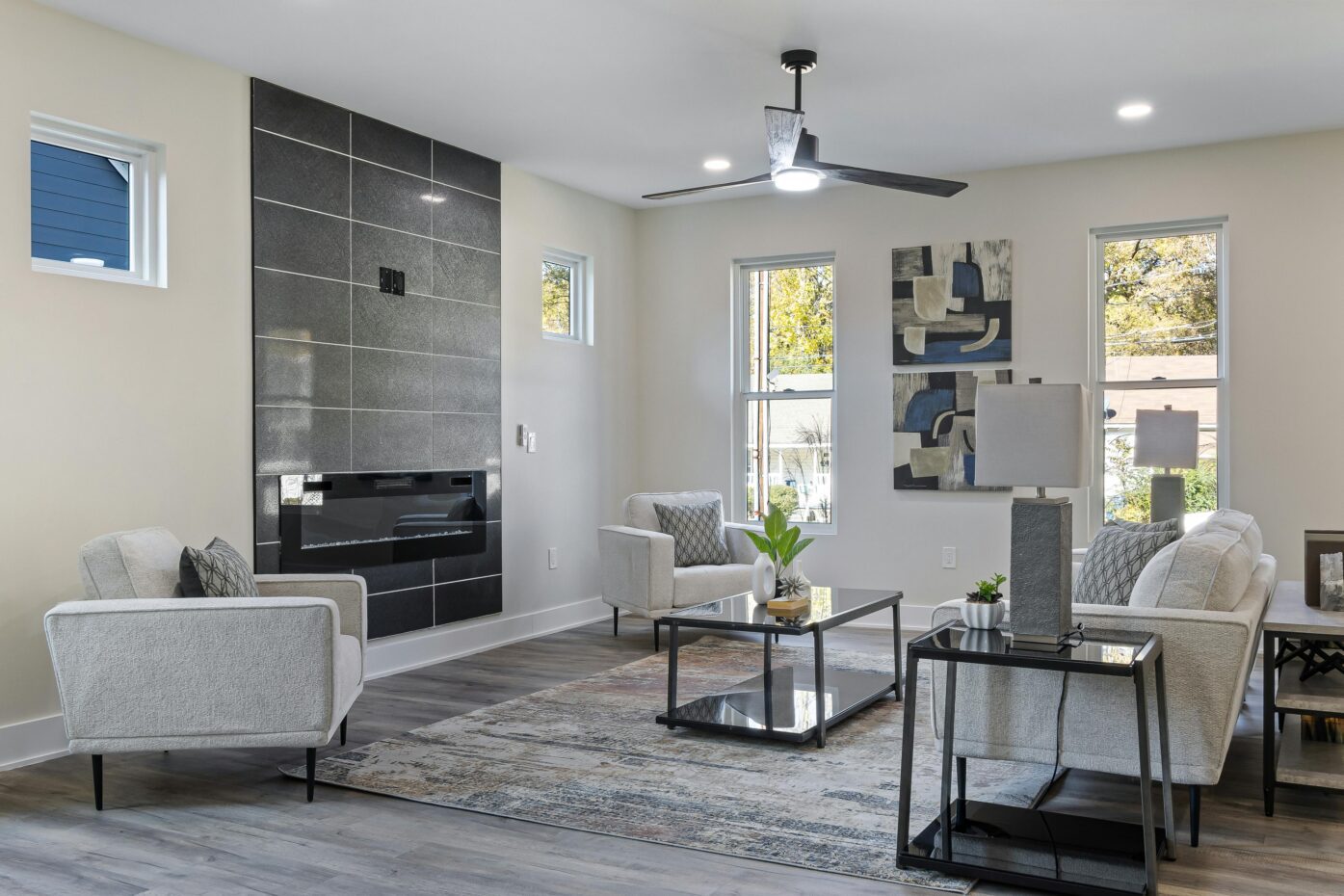
Living Room
The living room is often the hub of social activity in a home. To create a welcoming and lively space, consider using warm colors like reds, oranges, and yellows. If you prefer a more serene environment, cool colors like blues and greens can provide a calming effect. Neutral colors also work well in living rooms, offering a versatile backdrop that you can easily change with accessories and accents.
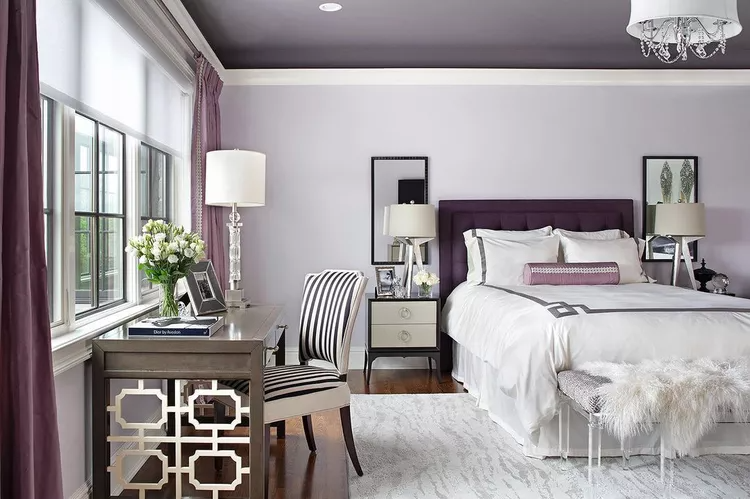
Bedroom
The bedroom is your personal retreat, where relaxation is key. Soft, cool colors such as light blues, greens, and lavenders can help create a tranquil and restful atmosphere. If you prefer a warmer palette, soft pinks and warm neutrals like beige and taupe can also promote relaxation without being too stimulating.
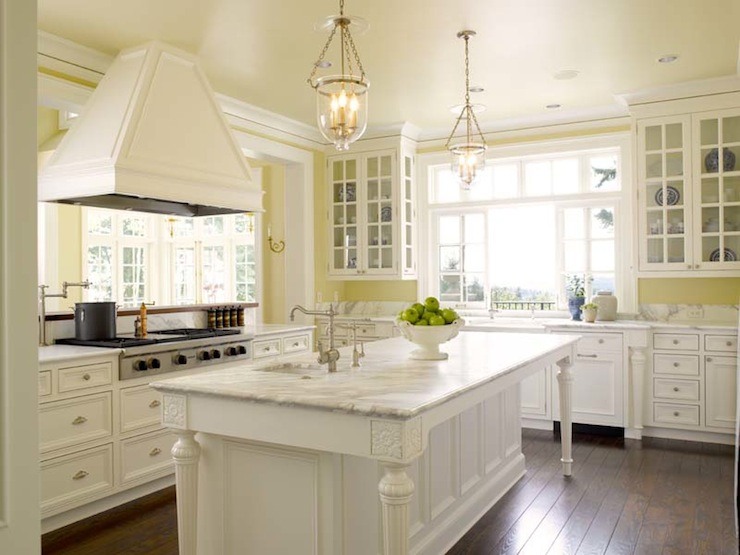
Kitchen
Kitchens are often considered the heart of the home, and colors that stimulate appetite and conversation can be beneficial. Warm colors like yellows, oranges, and reds can create a cozy and inviting space. For a more modern look, consider using a combination of bright whites with splashes of bold colors like red or green for accents.
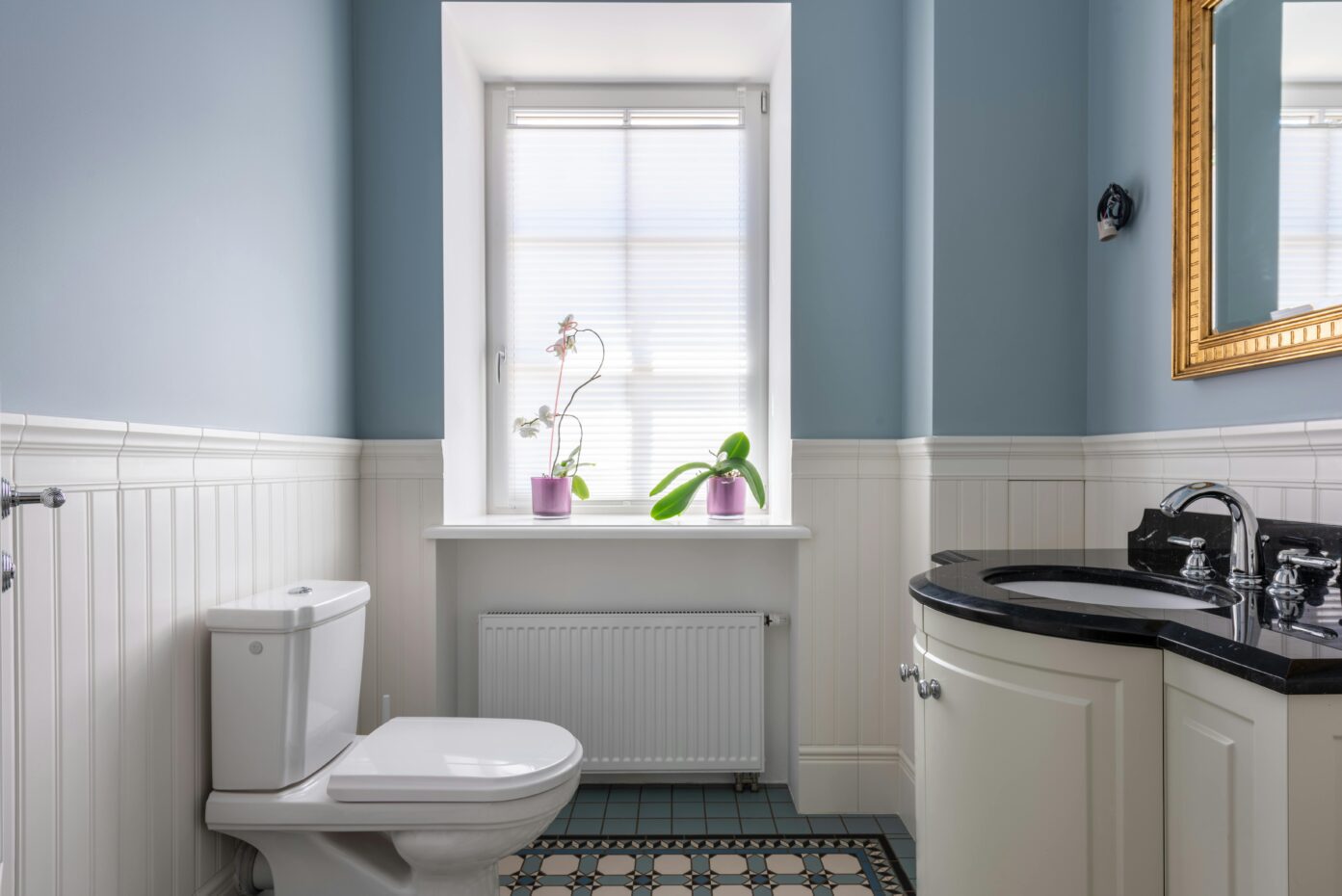
Bathroom
Bathrooms are spaces for relaxation and rejuvenation. Cool colors like blues and greens can create a spa-like atmosphere, while white and light neutrals can make the space feel clean and refreshing. Adding accents in soothing hues like lavender or soft pink can enhance the sense of calm.
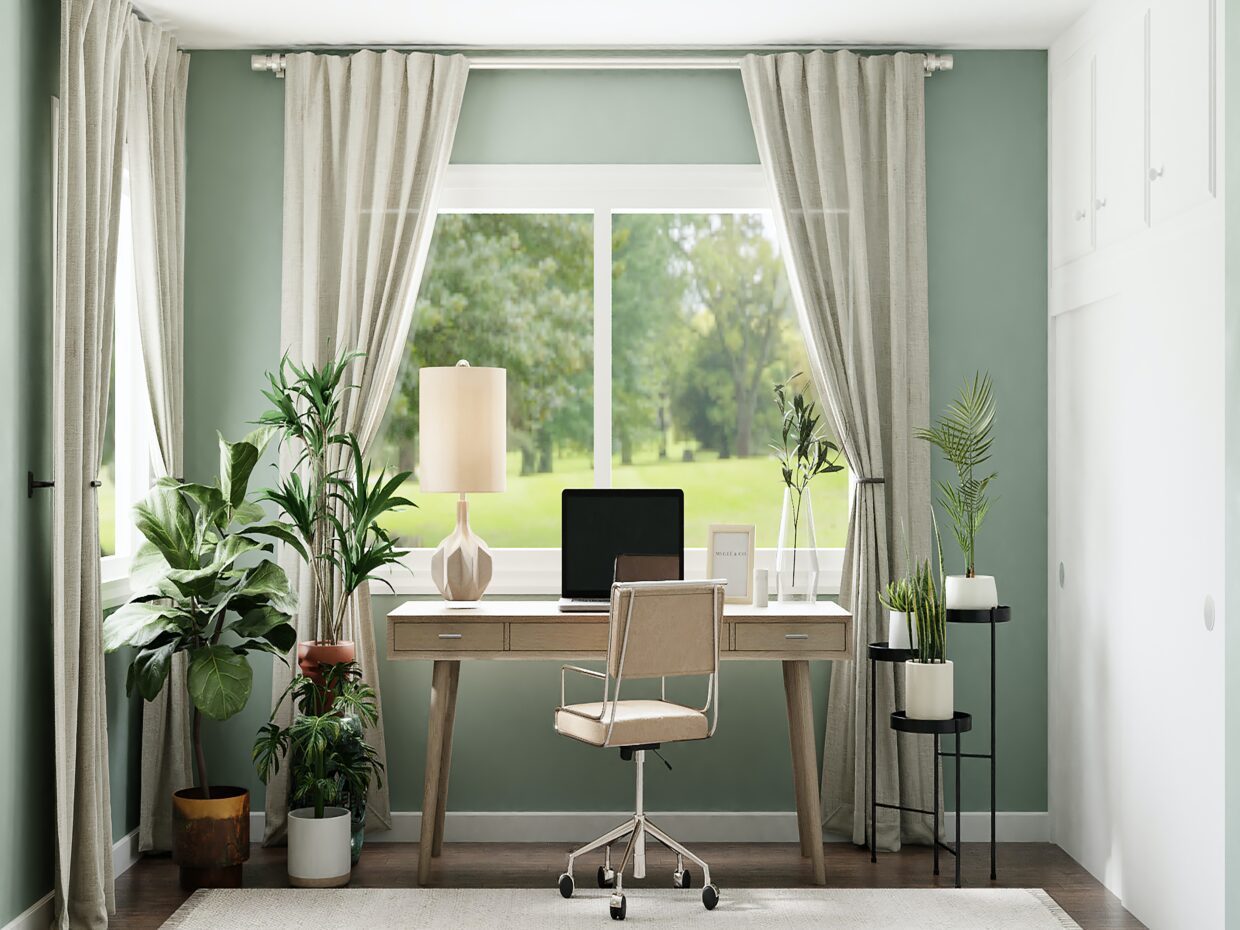
Home Office
A home office should be a place of focus and productivity. Green is an excellent choice as it is both calming and promotes concentration. Blue can also be effective for creating a productive and serene environment. If you need a boost of creativity, consider adding splashes of purple or yellow.
Choosing the right color palette for your home involves more than just picking your favorite colors. By understanding the principles of color psychology, you can create spaces that not only look beautiful but also support your desired mood and activities. Remember to consider the function of each room, the natural light available, and your personal preferences when selecting colors. With a thoughtful approach, you can transform your home into a harmonious and inviting sanctuary. If you’re feeling overwhelmed or unsure where to start, we’d love to help you figure it all out and bring your vision to life.
Home Staging by Lisa – is a trusted partner in the Chicago Western Suburbs for home staging and decorating. They specialize in helping agents and their clients achieve optimal returns on investment, while also offering homeowners a personalized redesign service to create spaces they love coming home to. Servicing Chicagoland areas of Addison, Bartlett, Bensenville, Berwyn, Bloomingdale, Bolingbrook, Brookfield, Burr Ridge, Carol Stream, Clarendon Hills, Countryside, Darien, Downers Grove, Elmhurst, Geneva, Glen Ellyn, Glendale Heights, Hanover Park, Hinsdale, Lagrange, Lombard, Lisle, Naperville, Oakbrook, Oakbrook Terrace, Oak Park, Roselle, St. Charles, Streamwood, Villa Park, Warrenville, Western Springs, Westmont, Wheaton, Winfield.
